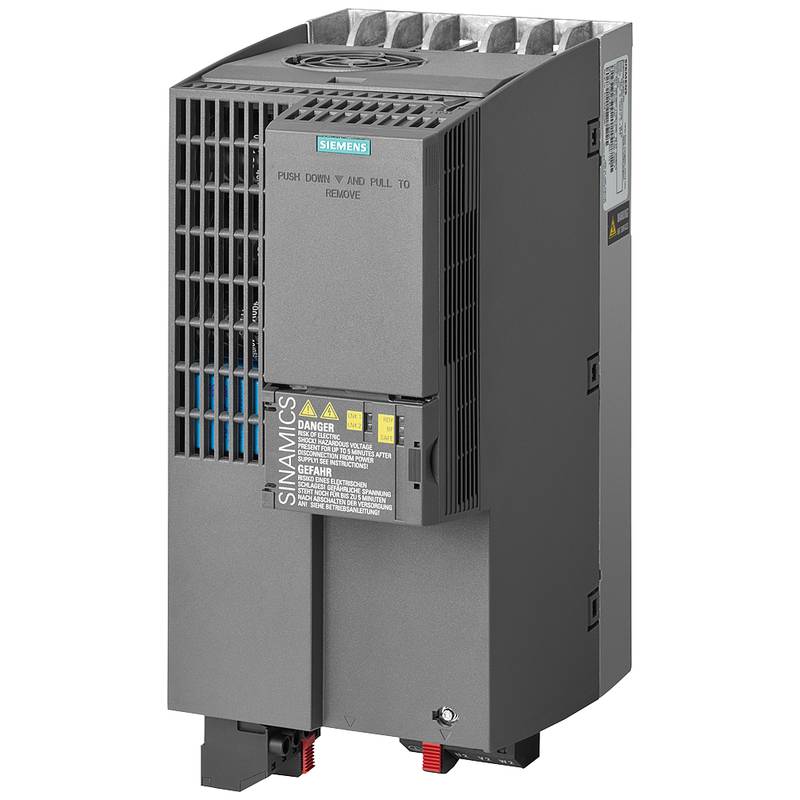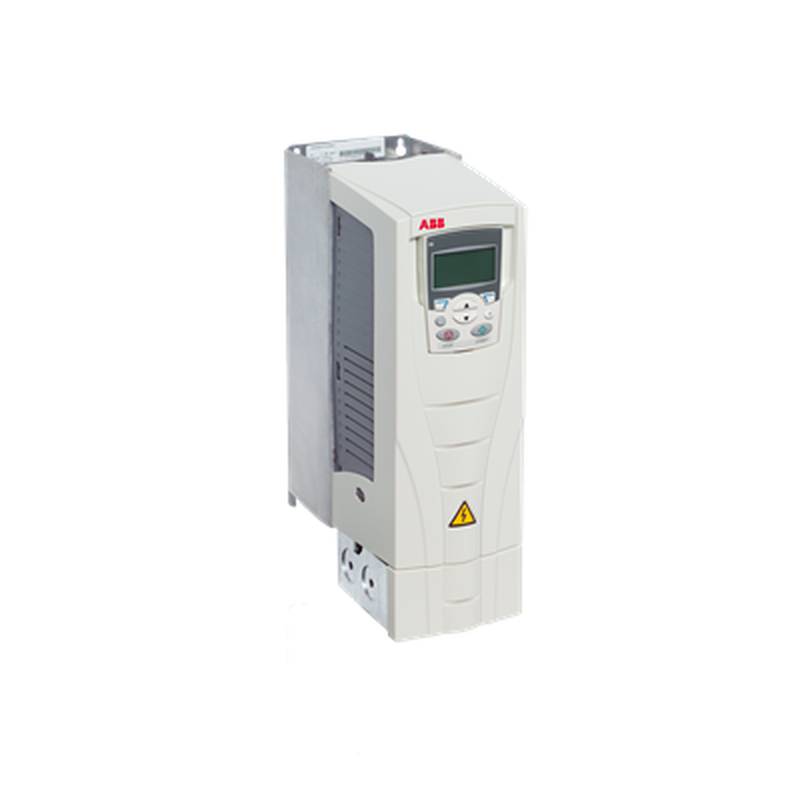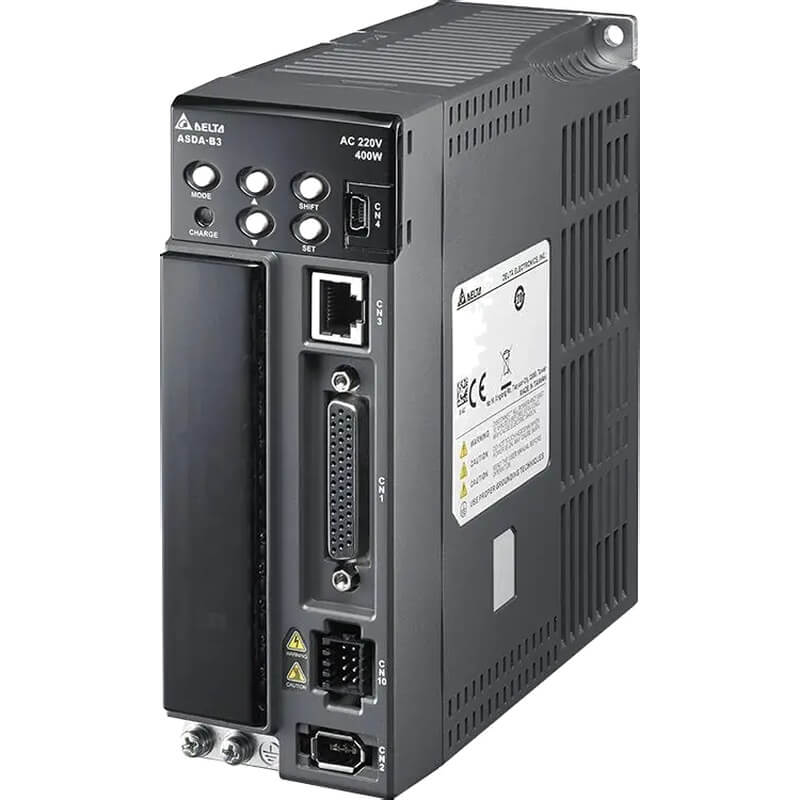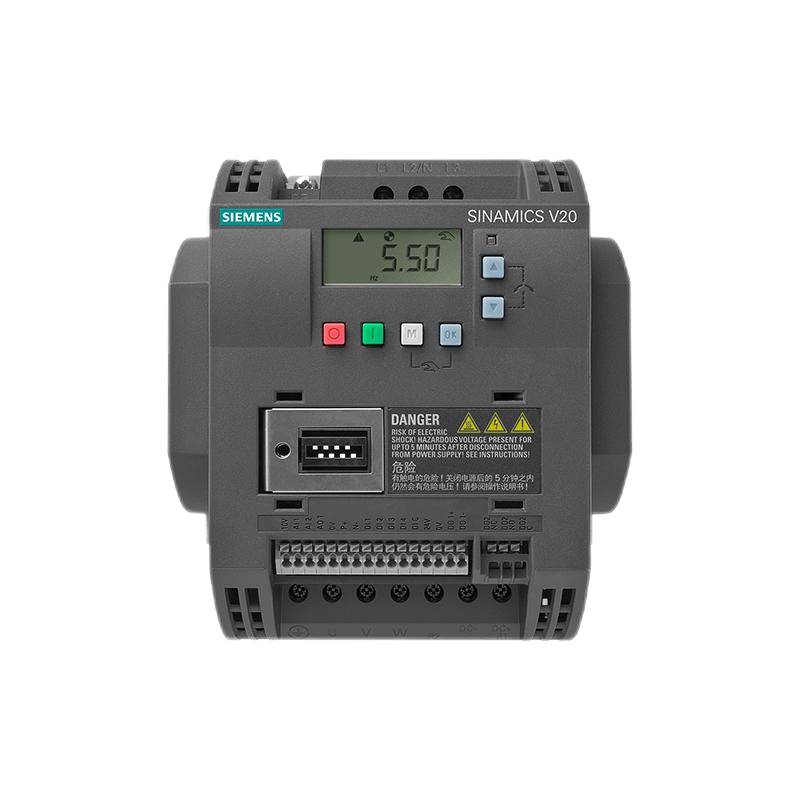
The YASKAWA HB4A0091ABC H1000 inverter stands as a robust solution for heavy industry, engineered to handle high overload demands with a 37kW power rating and an 80A output. This drive is specifically designed for applications requiring exceptional torque and reliability, featuring advanced control algorithms and a hardened design for demanding environments. Its core advantages lie in superior thermal management, precise motor control, and built-in protections that ensure operational longevity and minimize downtime. Key technical parameters include a 3-phase input/output, a maximum output current of 80A, and a power capacity of 37kW, suitable for a wide range of heavy-duty machinery.
Product Specifications
| Parameter | Value |
| :------------------- | :---------------------------------- |
| Model | YASKAWA HB4A0091ABC H1000 |
| Power Rating | 37kW (50 HP) |
| Output Current | 80A |
| Input Voltage | 3-Phase, 380-480V AC |
| Output Voltage | 3-Phase, 380-480V AC |
| Overload Capability | High (e.g., 150% for 60s) |
| Control Method | Advanced Closed-Loop Vector Control |
| Ambient Temperature | -20°C to +50°C |
| Protection Rating | IP20 (or higher depending on option) |
| Mounting | Wall or panel mount |
| Communication Options| Modbus RTU, EtherNet/IP, Profibus DP|
Core Features & Market Positioning
The YASKAWA H1000 series, exemplified by the HB4A0091ABC model, distinguishes itself in the heavy industry VFD market through its unparalleled high overload capability and advanced closed-loop vector control. This allows for precise speed and torque regulation, even under rapidly changing load conditions, which is critical for applications like crushers, extruders, and large pumps. Unlike standard drives, the H1000’s robust design incorporates enhanced thermal dissipation and component redundancy, positioning it as a premium choice for mission-critical operations where reliability and uptime are paramount. Its integrated safety functions and communication versatility further solidify its market standing as a leading-edge industrial automation component.
Key Application Scenarios
This YASKAWA HB4A0091ABC H1000 inverter is ideally suited for demanding applications within the heavy industry sector. Its high overload capacity makes it perfect for starting and running large, inertia-driven loads such as large conveyor systems, ball mills, and heavy-duty mixers. Mining operations, cement plants, and steel mills frequently utilize drives of this caliber for applications requiring significant torque from a standstill and the ability to withstand dynamic load fluctuations. Furthermore, its precise control capabilities lend themselves to specialized machinery in the pulp and paper industry, as well as in large-scale plastic extrusion processes where consistent speed and torque are vital for product quality.
Practical System Integration Guidance
Integrating the YASKAWA HB4A0091ABC H1000 inverter into existing heavy industrial systems demands careful planning. Ensure the power supply meets the 3-phase, 380-480V AC requirement, and that the upstream circuit protection (circuit breaker or fuses) is appropriately sized for the 80A continuous current and potential inrush currents. For optimal performance and safety, employ shielded motor cables to minimize electromagnetic interference, especially in electrically noisy environments. Referencing the detailed wiring diagrams in the YASKAWA H1000 manual is crucial for correct connection of motor, control, and power terminals. Parameter configuration typically involves setting motor data for closed-loop vector control, defining acceleration/deceleration times, and configuring protective functions tailored to the specific application.
Operation and Risk Mitigation
Operating the YASKAWA HB4A0091ABC H1000 inverter requires adherence to safety protocols, especially considering its high power rating. Always ensure proper grounding and verify that all safety interlocks are functional before commissioning. Common troubleshooting often involves reviewing fault codes displayed on the inverter's panel. For instance, an "OC" (Overcurrent) fault might indicate a motor issue, excessive load, or incorrect parameter settings. An "OV" (Overvoltage) fault could point to regenerative energy feedback exceeding the drive's capacity, potentially requiring a braking resistor. Regular inspection of cooling fans and heat sinks is vital to prevent thermal shutdowns, a critical aspect of risk mitigation for sustained operation.
Scalability & Long-Term Value
The YASKAWA H1000 series, including the HB4A0091ABC, offers significant scalability and long-term value through its robust design and integration capabilities. Its compatibility with YASKAWA's broader automation ecosystem and support for various industrial communication protocols like EtherNet/IP and Profibus DP allows for seamless integration into larger plant-wide control systems and IIoT platforms. This facilitates advanced monitoring, predictive maintenance, and remote management, enhancing operational efficiency. The inherent durability and YASKAWA's reputation for reliable motor control ensure a long service life, minimizing total cost of ownership and providing a dependable foundation for future industrial automation upgrades.
*
Frequently Asked Questions (FAQs)
Q1: What is the maximum overload capacity of the YASKAWA HB4A0091ABC H1000?
The YASKAWA HB4A0091ABC H1000 inverter offers substantial high overload capability, typically rated to handle 150% of its nominal current for 60 seconds. This allows it to manage significant transient torque demands common in heavy industrial applications. It's engineered for applications with high starting inertia loads.
This robust overload performance ensures that the drive can start and accelerate heavy machinery without tripping. It is a key feature differentiating it from standard inverters. Proper parameterization is crucial to utilize this feature effectively.
This high overload capacity is essential for applications like crushers, extruders, and large conveyor systems. It prevents nuisance tripping during momentary load spikes. The drive's internal thermal management is designed to cope with these overloads.
Q2: What types of motors can be controlled by the YASKAWA HB4A0091ABC H1000 inverter?
The YASKAWA HB4A0091ABC H1000 is designed to control 3-phase AC induction motors and permanent magnet synchronous motors. It utilizes advanced closed-loop vector control for precise performance. Motor parameters must be accurately programmed for optimal operation.
It excels in applications requiring high torque at low speeds and accurate speed regulation. The closed-loop feedback ensures the drive knows the motor's exact speed and position. This is critical for demanding tasks.
When using permanent magnet motors, expect even higher efficiency and dynamic response. Always refer to the motor manufacturer's specifications for compatibility. The inverter supports encoder feedback for closed-loop control.
Q3: What are the typical industrial applications for the YASKAWA HB4A0091ABC H1000?
This inverter is exceptionally well-suited for heavy-duty applications in sectors like mining, cement production, and steel manufacturing. Its high torque and overload capacity are ideal for driving crushers, mills, and large pumps. It ensures reliable operation in harsh environments.
It is also commonly used in the pulp and paper industry for large roller drives and in chemical plants for heavy mixers and agitators. The drive’s robust construction withstands challenging operational conditions. It provides precise process control.
Plastic extrusion lines and large HVAC systems requiring significant airflow also benefit from its capabilities. The ability to precisely control speed and torque contributes to energy savings and process optimization. It is built for continuous operation.
Q4: How does the YASKAWA HB4A0091ABC H1000 handle heat dissipation?
The YASKAWA HB4A0091ABC H1000 inverter features an advanced thermal management system. This includes a large heatsink and efficient internal cooling fans. These components work together to dissipate heat generated during operation, especially under heavy loads.
Its design prioritizes maintaining optimal operating temperatures even during sustained high-overload conditions. This prevents thermal derating and ensures consistent performance. Proper ventilation around the drive is essential.
The internal fans are often monitored, and fault codes can alert operators to any issues with cooling. For extreme environments, external cooling solutions or higher IP-rated enclosures might be considered. This ensures longevity.
Q5: What communication protocols are supported by the YASKAWA H1000 series?
The YASKAWA H1000 series, including this model, typically supports major industrial Ethernet protocols such as EtherNet/IP and Profinet. It also commonly features serial communication options like Modbus RTU. This allows for easy integration into various automation systems.
These communication capabilities enable seamless data exchange between the inverter and PLCs or SCADA systems. This facilitates remote monitoring, control, and diagnostics. It is crucial for modern smart factories.
The specific communication options might require optional modules. Always verify the installed options or available slots for network cards. This ensures compatibility with your existing network infrastructure.
Q6: What is the power factor correction capability of this inverter?
While the YASKAWA HB4A0091ABC H1000 is designed for high performance, active power factor correction is not a standard integrated feature. However, its advanced switching technology helps minimize harmonic distortion. This can indirectly improve the overall power factor.
For applications requiring strict power factor compliance, external components like line reactors or active filters may be necessary. These can be specified based on the plant’s electrical system requirements. Consult an electrical engineer for sizing.
The drive's focus is on delivering high torque and precise motor control, making it suitable for heavy industrial loads. Its design prioritizes power delivery under demanding conditions. It reduces peak demand charges.
Q7: What safety features are integrated into the YASKAWA HB4A0091ABC H1000?
The YASKAWA H1000 series incorporates essential safety functions, often including Safe Torque Off (STO). STO is a hardware-based safety function that prevents the motor from generating torque, ensuring operator safety during maintenance or emergencies. It is a critical component for machinery safety compliance.
The drive also includes numerous protection functions against overcurrent, overvoltage, undervoltage, and overtemperature. These features protect both the inverter and the connected motor from damage. They also contribute to overall system reliability.
Adhering to safety standards and proper integration of these features into the machine's safety circuit is paramount. Always consult the product manual and relevant safety directives for complete implementation details. Ensure certified safety components are used.
Q8: Can this inverter be used for applications requiring precise positioning?
Yes, the YASKAWA HB4A0091ABC H1000, particularly when configured with closed-loop vector control and an encoder, can achieve precise speed and torque regulation suitable for many positioning tasks. While not a dedicated servo drive, its accuracy is high for VFD standards. It can hold position under load effectively.
For extremely high-precision positioning requirements, such as those found in robotics or CNC machinery, a dedicated servo system might be more appropriate. However, for many industrial automation tasks that require accurate speed holding and dynamic response, this drive performs exceptionally well. It offers a good balance of performance and cost.
The performance in positioning applications heavily depends on proper motor selection, encoder feedback, and accurate parameter tuning. Careful system design and integration are key to achieving optimal results. It offers robust control.
Q9: What is the typical ambient operating temperature range for this inverter?
The YASKAWA HB4A0091ABC H1000 is generally rated for an ambient operating temperature range from -20°C to +50°C. However, operating at the higher end of this range, especially under heavy load conditions, may necessitate derating or enhanced ventilation. Always ensure adequate airflow.
Operating within the specified temperature range is crucial for the longevity and reliability of the electronic components. Exceeding these limits can lead to premature failure or performance degradation. Consider the thermal environment of the installation site.
For installations in extreme cold or heat, consult the YASKAWA documentation for specific guidance on special operating conditions or accessories. Proper installation environment management is key to maximizing the drive's lifespan. It ensures optimal performance.
Q10: How do I reset a fault on the YASKAWA HB4A0091ABC H1000 inverter?
Faults on the YASKAWA HB4A0091ABC H1000 inverter can typically be reset either automatically or manually. Automatic reset is configurable for certain non-critical faults, allowing the drive to resume operation after a brief delay. Manual reset is usually performed via the control panel or a digital input.
Before attempting a reset, it is crucial to identify and rectify the underlying cause of the fault. Simply resetting without addressing the root issue will likely result in the fault recurring, potentially causing further damage. Always consult the fault code list in the manual.
The procedure for manual reset involves navigating the drive's menu to the fault reset option or momentarily activating a designated digital input terminal configured for reset. Ensure all safety protocols are followed before initiating any reset procedure. Proper troubleshooting is key.
























